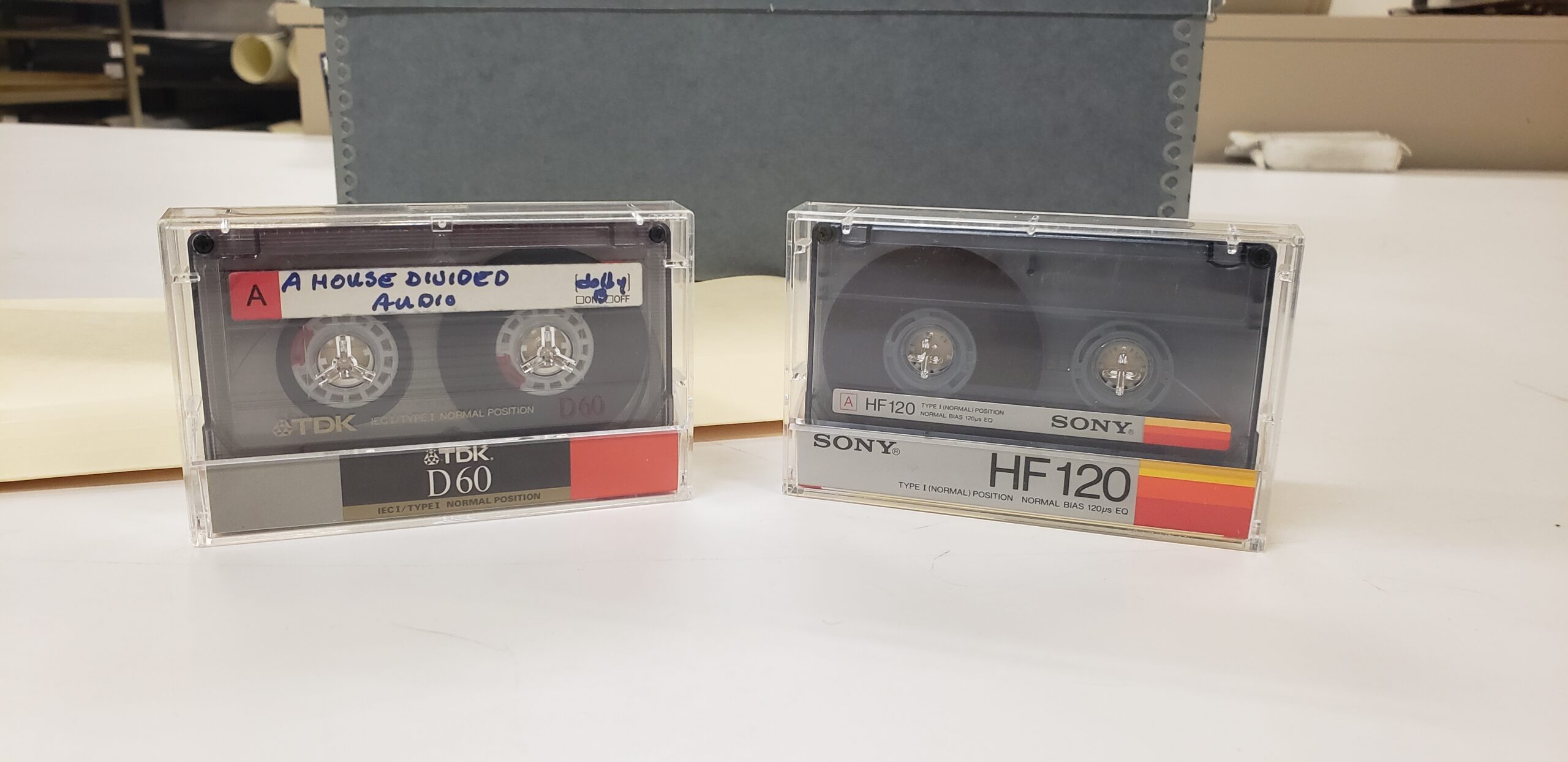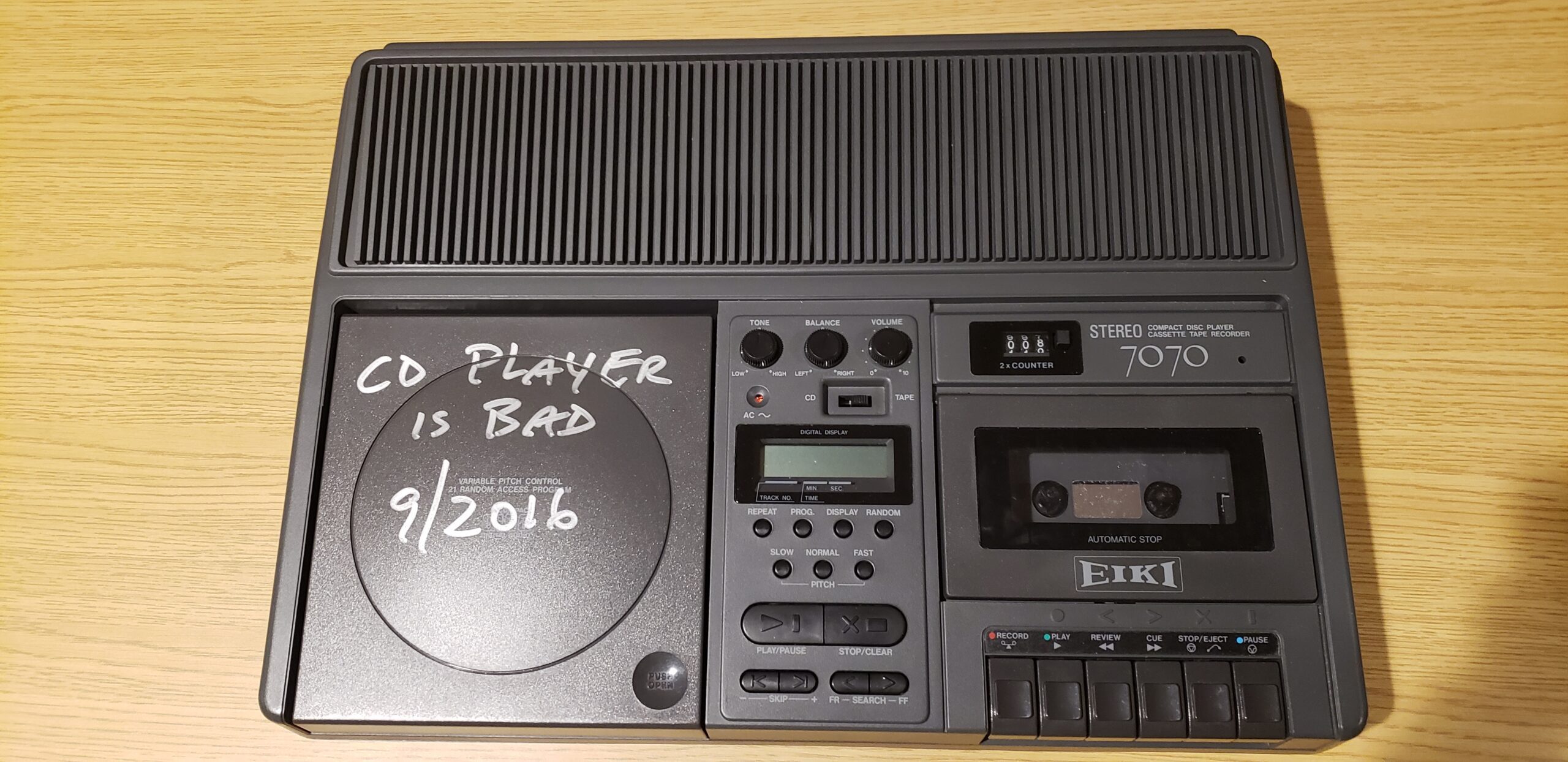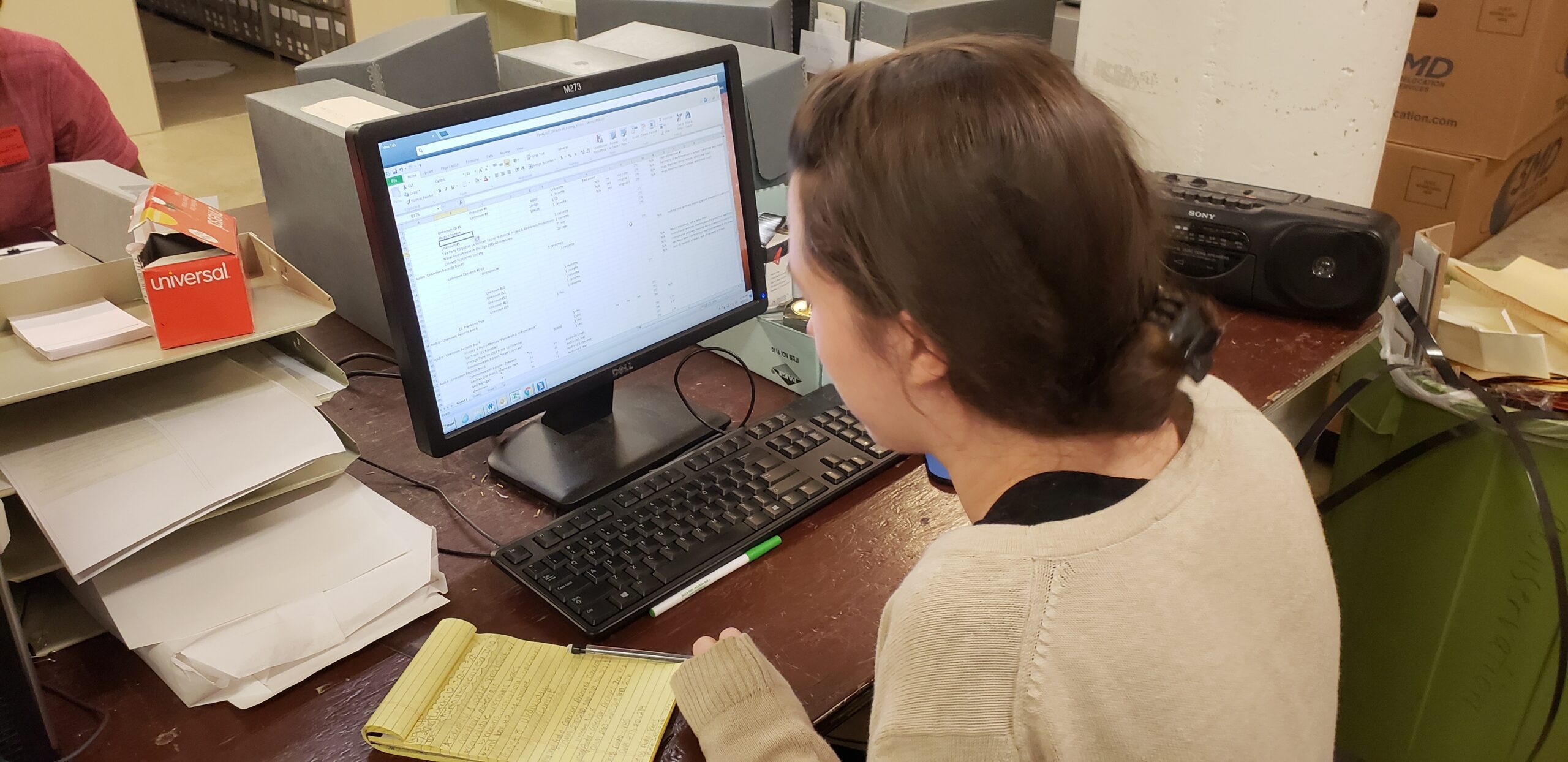In a world of podcasts and online streaming, CHM collections intern Angela Thomas demonstrates that audio cassette tapes are still in use. In this blog post, she summarizes her work identifying and labeling audio content as part of her internship through the DePaul University museum studies certificate program.
Just as people do not always remember to label their photographs, they also do not always label their audio cassette tapes. During the summer of 2018, I had the unique opportunity to help investigate the mystery of unidentified audio cassette tapes at the Chicago History Museum. Since cassette tapes are a bit before my time, I was unaware that they were still vastly abundant in archives, but after hunting down a cassette player and listening to fifty-three mystery cassettes, I now know that they are not only abundant but invaluable for the information that they contain.

Cassettes, such as these, contain many important archival materials, including oral history interviews and recordings of lectures held at the Museum.
Many of the mystery cassettes were completely unlabeled and, thus, their contents were truly unknown. The rest of the tapes had labels, but often, the text was not helpful in identifying what was recorded. Nevertheless, label or no label, nothing about the cassettes revealed their contents or where they belonged until someone listened to them. Many tapes required significant attention: Some had to be listened to for thirty minutes before the contents and subject were clear. Others needed only ten minutes for the same amount of clarity. Deciphering the contents of each tape was the biggest challenge. Some were obviously oral histories, but an oral history about who or what? Other cassettes revealed themselves to be radio program recordings, but I still had to figure out what station recorded it, who the speaker was, and what they were talking about.

I used this duel compact disc/audio cassette player to listen to the cassette tapes. As you can see, the CD player no longer works.
Once I had enough information from a cassette, I needed to determine to which collection it belonged. Referencing the online catalogue, ARCHIE, and using internet searches, I was able to use the keywords I had gathered, including names, places, organizations, or movements, to find out if a tape had a connection to a particular collection. I then updated the inventory with my findings. Many of the mystery tapes did not belong to the collection and were actually institutional archives—recordings of guest lectures, meetings, and special events, such as the Museum’s bicentennial celebration of the Constitution.

CHM collections intern Angela Thomas types her content notes after listening to cassette tapes.
I thoroughly enjoyed playing audio detective. Listening to the tapes was a treat because I was able to experience all the cassettes as if I was attending a particular guest lecture, radio program, or interview. Being able to connect the items to their collections and properly identify them in the finding aids, as well as discovering institutional archival materials, was a rewarding experience, because I know that these materials are now easier for staff and researchers to find and use. Interning at the Museum was an unforgettable experience, and I learned more than I could have imagined about the Archives & Manuscripts department, the Museum, and its collections. I am most happy that uncovering the secrets of the mystery audio has added more voices to the collection and that the work I did helped make that possible.